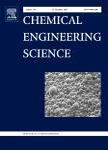版权所有:内蒙古大学图书馆 技术提供:维普资讯• 智图
内蒙古自治区呼和浩特市赛罕区大学西街235号 邮编: 010021

作者机构:Univ Kaiserslautern Lab Engn Thermodynam D-67663 Kaiserslautern Germany BASF SE D-67056 Ludwigshafen Germany
出 版 物:《CHEMICAL ENGINEERING SCIENCE》 (化学工程科学)
年 卷 期:2012年第84卷
页 面:315-332页
核心收录:
学科分类:0817[工学-化学工程与技术] 08[工学]
主 题:Separations Distillation Phase equilibria Design infinity/infinity-Analysis Piece-wise linearization
摘 要:A method for the analysis of flowsheets consisting of an arbitrary number of distillation columns and mixers in conceptual process design is presented in this work. The required information on the process is reduced to a minimum: besides the fluid property model, only information on the flow sheet structure, the overall feed streams and a suitable set of desired product specifications is needed. The method is based on the study of thermodynamic limiting cases by applying infinity/infinity-analysis to distillation columns. Thus, the attainable distillate and bottom compositions are described by the invariant manifolds of the singular points of the respective vapor-liquid equilibria. The approach based on residue curve maps or distillation line diagrams is general and not limited to the number of components or azeotropes. Only homogeneous azeotropes are discussed in the present work. The nonlinearity in the resulting short-cut model is only introduced by the fluid properties. By applying a suitable linearization to the separatrices of the vapor-liquid equilibria the invariant manifolds of the singular points are represented by linear elements. This results in piece-wise linear sub-models for the attainable product compositions. Brute force enumeration of the combined linear sub-models allows finding of all solutions reliably and robustly. Hence, comprehensive feasibility and multiplicity analysis are possible. An overview of the method is given followed by some examples for its application to a number of azeotropic distillation processes. (C) 2012 Elsevier Ltd. All rights reserved.